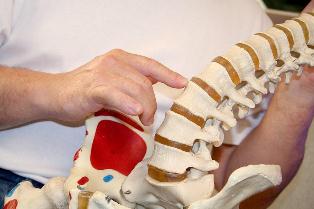


Low-back pain (LBP) remains one of the most prevalent and urgent medical issues out there, as no single treatment has proven to rid the masses of the disabling disorder, which continues to drive up medical costs and prevent many from working. This makes the search for an effective treatment method all the more important for patients, clinicians and health-care providers, and one treatment with some support is spinal manipulative therapy (SMT), which is widely used for acute and chronic LBP. A current set of guidelines does exist on SMT based on multiple randomized controlled trials (RCTs), but they're heavily dependent on an even earlier version of a Cochrane review and show conflicting results on SMT's effectiveness. Recommendations for using SMT to manage back pain also vary internationally, as it's a strong option in certain countries and not given consideration in others. Therefore, to improve these guidelines, an updated review of additional current articles combined with the original Cochrane review was created on the use of SMT for chronic LBP.
Major databases were searched for pertinent studies, and only RCTs on adult patients with chronic LBP (longer than 12 weeks) receiving either manipulation or mobilization of the spine were used. A total of 18 new trials were identified and added to the eight used in the original review, leading to 6,070 patients being examined in the trials. The objectives of the review were SMT on pain, functional status and recovery at the short-, intermediate- and long-term follow-ups compared to control treatments, and only patient-reported outcome measures were evaluated. Comparison therapies were combined into the following clusters: 1) SMT vs. inert interventions, 2) SMT vs. sham SMT, 3) SMT vs. all other interventions and 4) SMT in addition to any intervention vs. that intervention alone. All trials were also evaluated for the level of quality and risk of bias (RoB) of their research.
The strongest findings of the review were the high-quality evidence of SMT having a statistically significant short-term effect on pain relief and functional status compared to other interventions, and varying quality of evidence that SMT has a statistically significant short-term effect on those measures when added to another intervention. Unfortunately, the size of those effects was small and not clinically relevant, and most of the other comparisons produced conflicting results regarding SMT's effectiveness. The evidence therefore supports that these results are consistent with the previous review, which concluded that SMT is neither superior nor inferior to other effective treatments for patients with chronic LBP. Consequently, the decision to use SMT on a patient with chronic LBP should be based on costs, preferences of the patient and providers, and relative safety of the treatment options.
-As reported in the June '11 edition of Spine